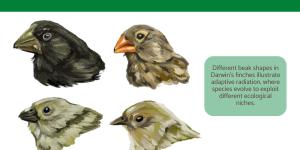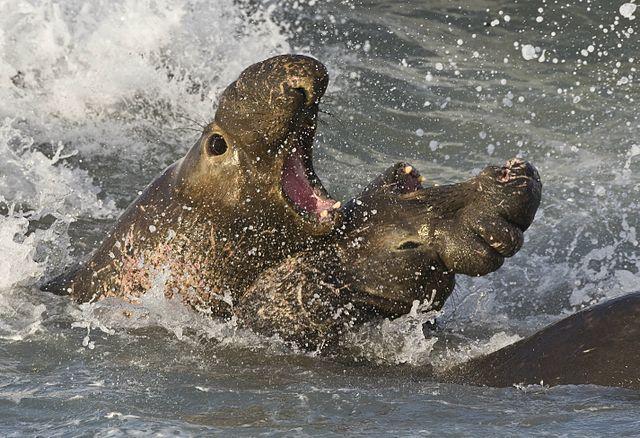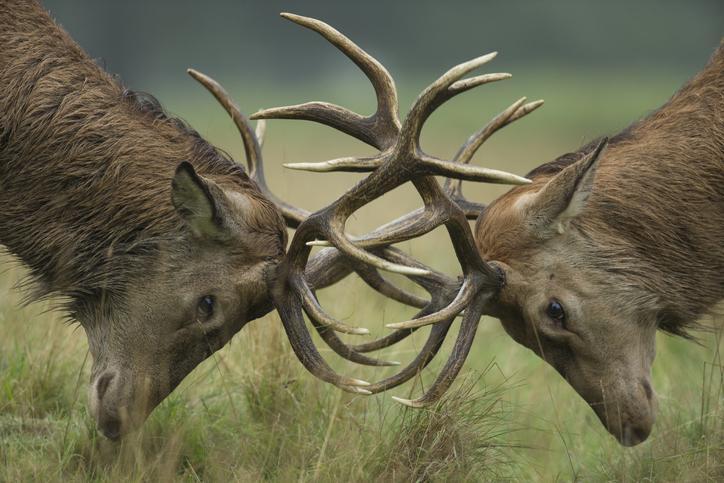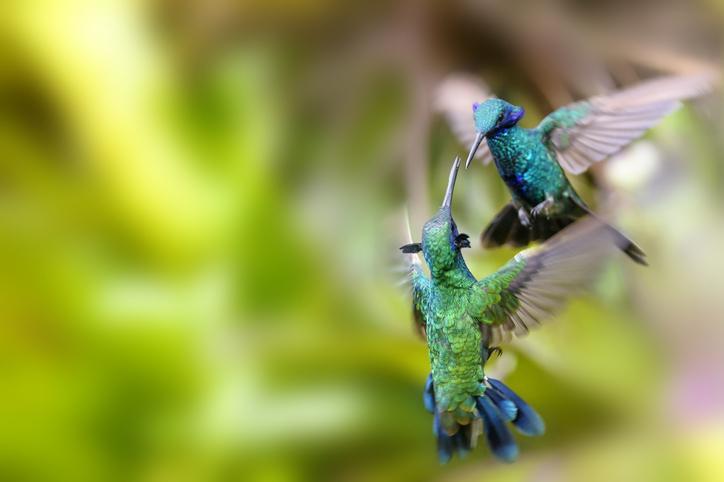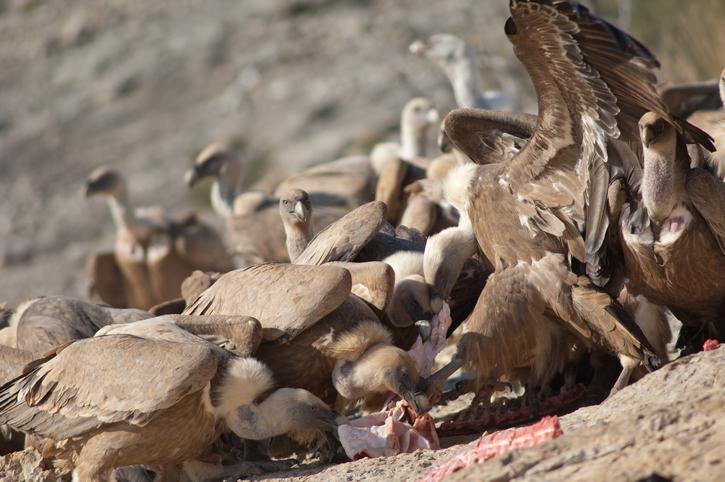What Is Intraspecies Competition?


Relationships between individuals of the same species can be positive or negative. Competition is a negative interaction in which at least one of the competitors is harmed. When individuals of the same species compete for food, territory, reproduction or social dominance, population growth can be affected. This is known as intraspecific competition or intraspecies competition.
We share more about how these types of species interactions occur as thedailyECO asks what is intraspecies competition? In addition to defining this biological interaction, we provide examples of intraspecific competition in nature.
What is intraspecies competition?
Intraspecies competition or intraspecific competition can be defined as the interaction that occurs between individuals of the same species which involves the common need for a limited resource. As a competition, there is a winner and loser, leading to a reduction in the survival, somatic growth and/or reproduction of the competing individuals.
While this can seem like a harmful process, it is actually an evolutionary trait which allows for the size of animal communities and populations to be regulated so that they remain stable. This is relative to the carrying capacity of animals, the maximum number of individuals which can live in the same environment without depletion of resources.
Unlike interspecies competition, there are also other types of positive intraspecific relationships based on cooperation or association. Family associations are a common example since they allow for the survival of the group, both in terms of reproduction and caring for individuals.

Characteristics of intraspecific competition
Below are some of the main characteristics of intraspecific competition which we can see in animals:
- Population growth is either stabilized or decreases thanks to some animals losing out in terms of fertility or survival.
- It only occurs if the resource is limited and will not happen during times of abundance.
- Intraspecific competition is by exploitation or by interference (see below).
- Although there is reciprocity (since both competitors are affected), competition is usually asymmetrical. This is because not all individuals respond equally to competition, since they do not all have the same physiological conditions.
- It depends on population density, making it a density-dependent process. The greater the number of individuals, the greater the competition, with population growth slowing as a result.
- The main reason for this type of competition is an increase in species population. In fact, competition doesn't occur until a certain density threshold is reached. After this threshold, resources become limited. Since individuals of the same species are involved, competition is much more intense than when it occurs between individuals of different species.
- Competition can occur not only for food or shelter resources, but also for reproduction and social dominance.
- Intraspecies competition can favor and increase the effectiveness of strong competitors, relative to their influence on future generations.
Learn more about how animals develop these interactions thanks to evolutionary processes such as parallel evolution in biology.

Types of intraspecific competition
Considering the type of relationship that takes place, whether it is direct or not, two main types of intraspecies competition can be established among individual members of the same species:
- Intraspecific competition for exploitation: this type of interaction is indirect and arises when one individual consumes the resource available for another individual which are necessary for the survival of either.
- Intraspecific interference competition: in this case, individuals fight and provide direct interference with each other's access to food or territory.
A form of intraspecific competition is seen in cannibalism. In these cases, the animals do not just remove the resources, but they kill and eat them as a way to benefit themselves to the detriment of the other. This is an extreme form of interference competition.
Learn more about how animals use each other for survival with our article explaining the difference between predator and prey.
Examples of intraspecies competition
Territorialism is one of the best examples of intraspecific interference competition. This is where an area or territory is defended by some individuals against others. These others are considered rivals in nature. Below are some examples of intraspecific animal and plant competition:
- Hummingbirds (family Trochilidae): are very territorial with other hummingbirds, defending the flowers in their territory to monopolize the nectar they contain.
- Betta fish (Betta slpendens): aggressively defend the territory in which their nests are located, protecting it from other males. It is for this reason they are also known as Siamese fighting fish.
- Trout (subfamily Salmoninae): populations are subject to intraspecific competition. When stocking density is very high, mortality increases to compensate for this increase and populations stabilize.
- Dune fescue (Vulpia fasciculata): at low densities, this plant species shows constant fertility (in terms of seed production). As density increases, its population size decreases. It is reasonable to assume that fewer plants in an area will produce more seeds than a larger number of plants with barely any space between them.
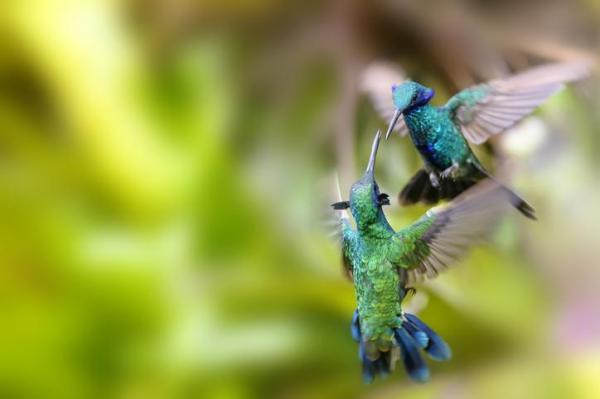
Consequences of intraspecifies competition
These are some of the main consequences or effects of intraspecific competition. They include the following:
- Intraspecific competition can affect individual growth and development. In fact, when population density is low, individuals are larger and develop more rapidly.
- It also reduces birth and fertility rates, helping to regulate population size and total biomass.
- Another possible consequence is increased exposure of prey to predators or increased susceptibility to disease.

Difference between interspecific competition and intraspecific competition
The main difference between both types of species competition is that intraspecies competition takes place between individuals of the same species, while interspecies competition is that which occurs between individuals of different species.
Furthermore, the primary motivation driving competition differs depending on whether it is intraspecific or interspecific. Individuals of the same species compete in response to an increase in their population, unlike individuals of different species. Different animals species compete due to a lack of resources (e.g. food and habitat) for other reasons.
Now you know what is intraspecies competition and see some examples in nature, you can learn more about how different animals interact with our article on cosmopolitan animal species.
If you want to read similar articles to What Is Intraspecies Competition?, we recommend you visit our Biology category.



